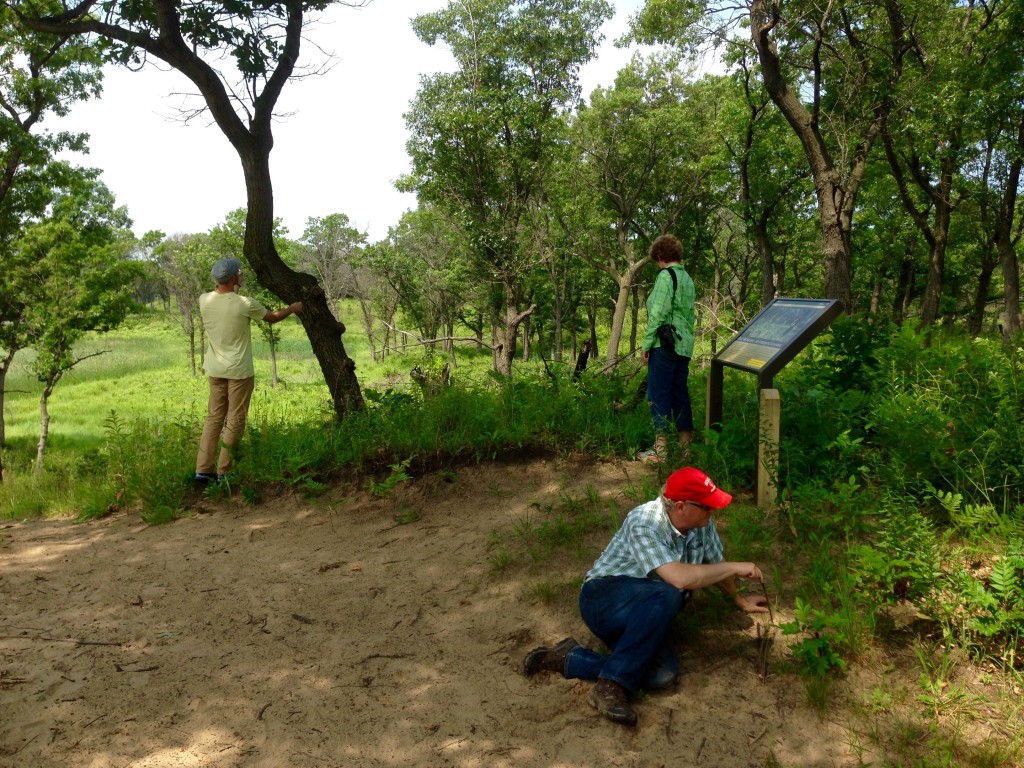Report: World Listening Day 2015 Soundwalk at Indiana Dunes National Lakeshore

Report, photos, and audio by Christopher Preissing
On Saturday, July 18 (World Listening Day 2015), Dan Godston led a soundwalk at Indiana Dunes National Lakeshore’s Miller Trail. In spite of predictions for extremely hot and humid temperatures, nine hearty listeners braved the heat on what turned out to be a beautiful warm and breezy day.
Starting at the Paul H. Douglas Center for Environmental Education, Dan introduced R. Murray Schafer and his seminal book, Soundscape: Our Sonic Environment and the Tuning of the World, and in keeping with this year’s H2O theme, Rachel Carson’s The Edge of the Sea, and Jerry Dennis’ The Living Great Lakes. National Park Service Ranger Steve Rodriguez hosted the event on behalf of the IDNL, and provided materials with which the soundwalkers created text and visual images based on passages from the books. We have been collaborating with IDNL on programs at the Douglas Center annually since 2010!
To introduce the soundwalk Dan described two types of engagement: the first consisting of active listening, the second including active engagement with the environment. On top of a small dune through which the trail passes, we stopped to make sound by hand with leaves, wood, and the sand at our feet. Following that acoustic interaction with the environment, we walked over the wood bridge that spans the marsh.
Audio recording of the soundwalk:
The “H2O” theme for World Listening Day 2015 drew attention to water as a metaphor and reality; essential for life and now becoming the greatest commodity of the 21st century. At the end of the bridge, Dan had left two containers for pond water and branches with which to make sound and feel the water. In both instances soundwalkers participated joyfully, and reported these interactions as an important component of the experience. ”When we were making sounds it felt very childlike, which brought to mind a lot of what kids’ play is just making sound for the joy of making sound.”


Sound walkers described listening without the other senses as ”a good way to keep your focus;” that ”there’s competition between the senses” as well as ”for what you want to listen to;” and that ”it was sensory overload.” Some additional comments include: ”Cottonwood trees can be very loud.” ”It’s very squeaky when you walk.” ”I never paid attention but different trees make different sounds. I wondered how the birds and the insects take cues from that and how it affects what they do.” There was also a brief discussion around how our ears and brains actively filter various sounds in the environment, whereas microphones hear everything.
More photos are in our Album at https://goo.gl/photos/mGkjy3QrRnFWi3bc7

